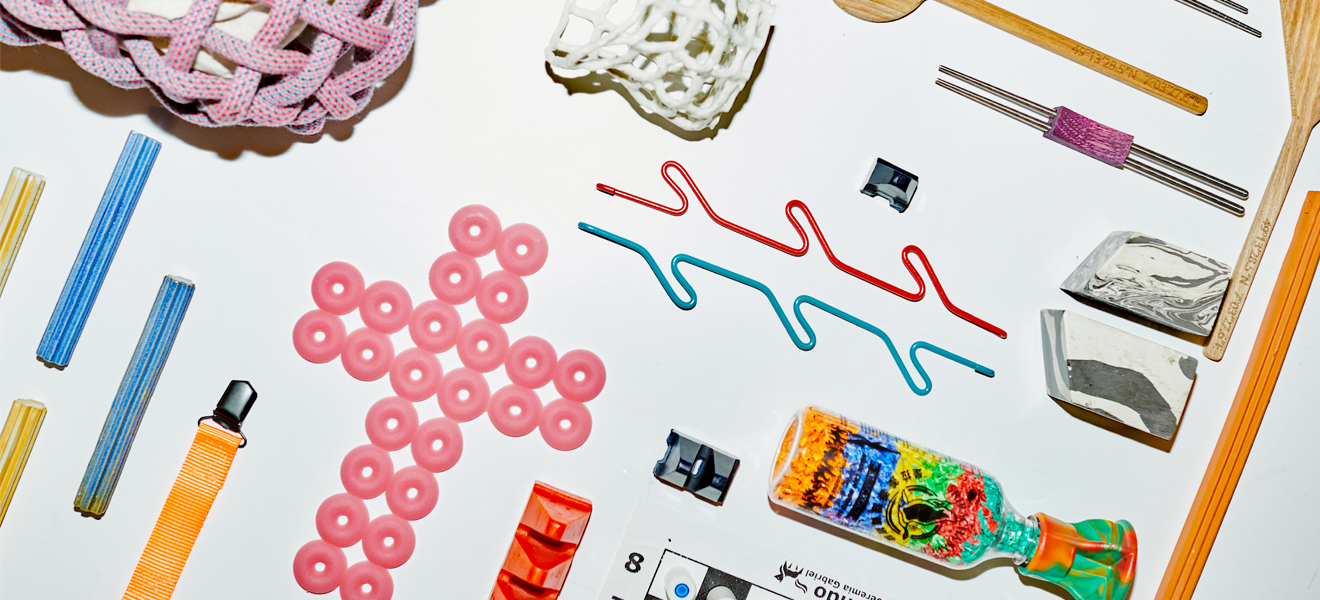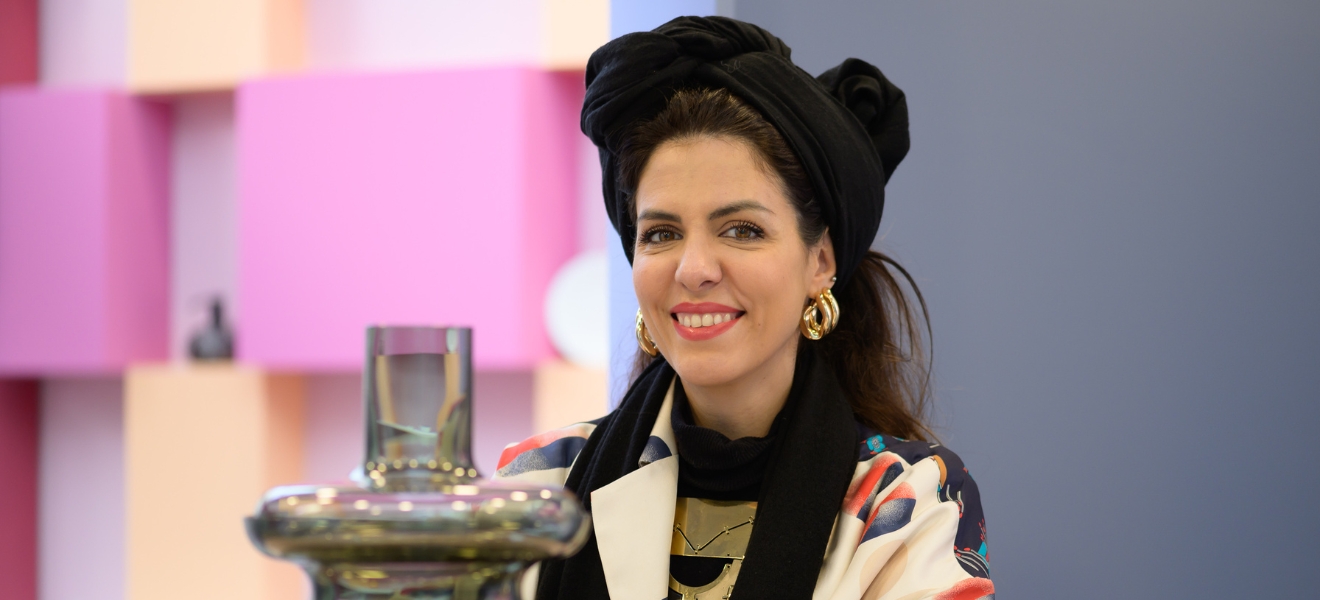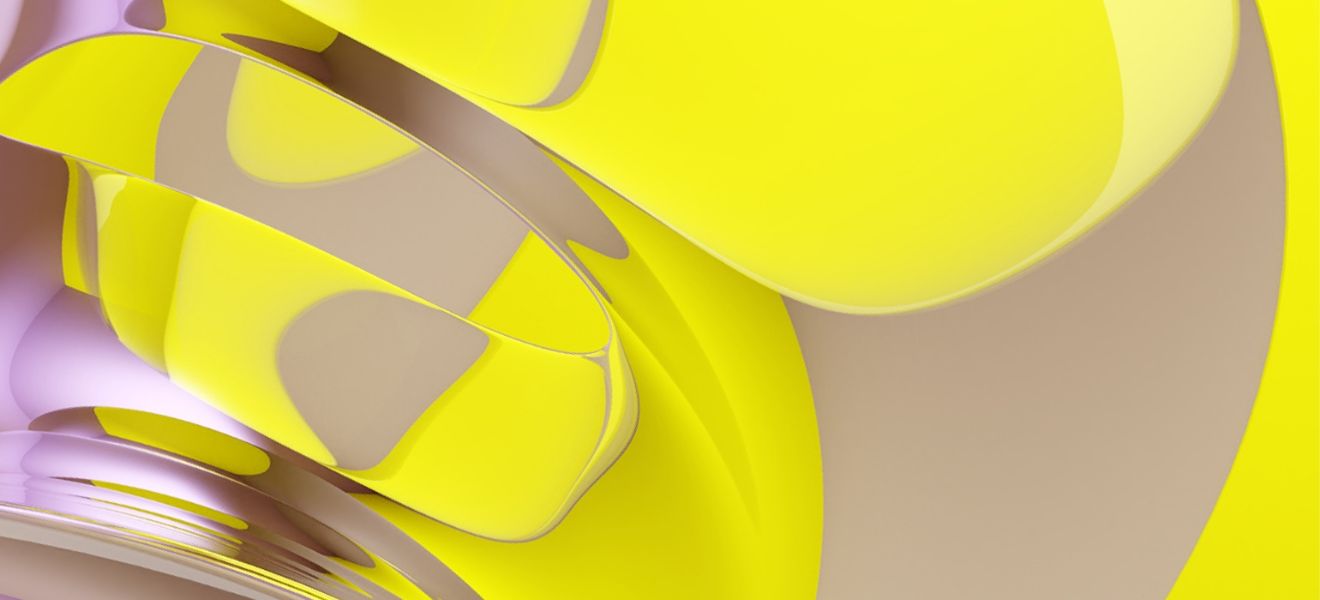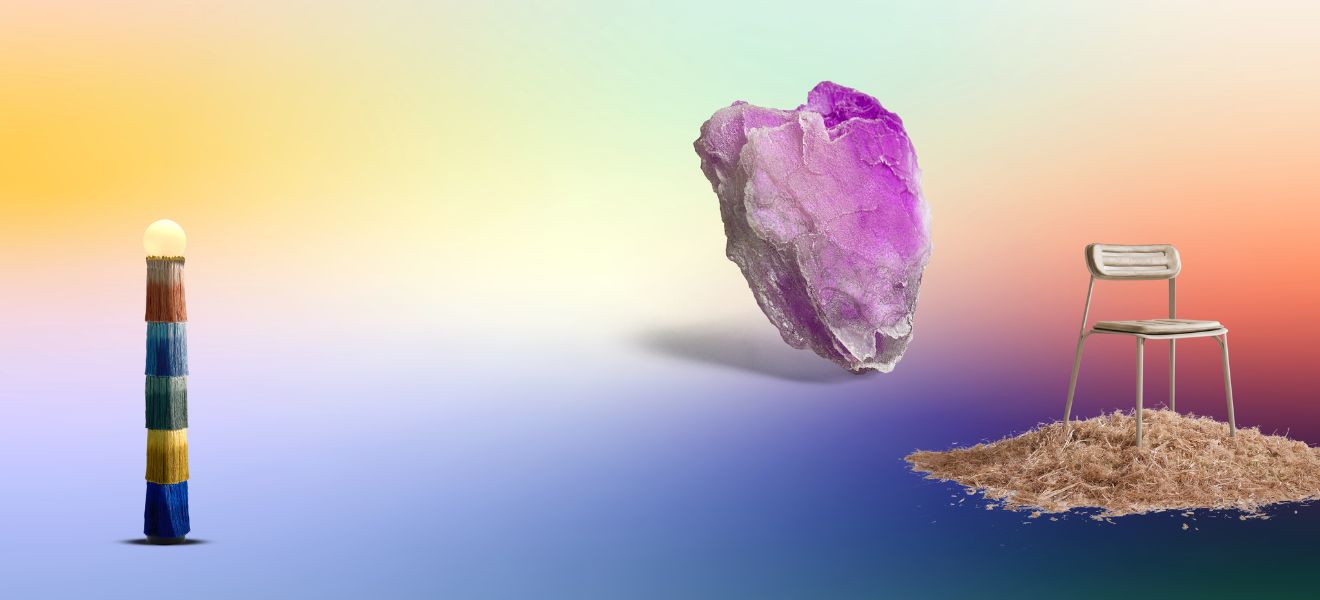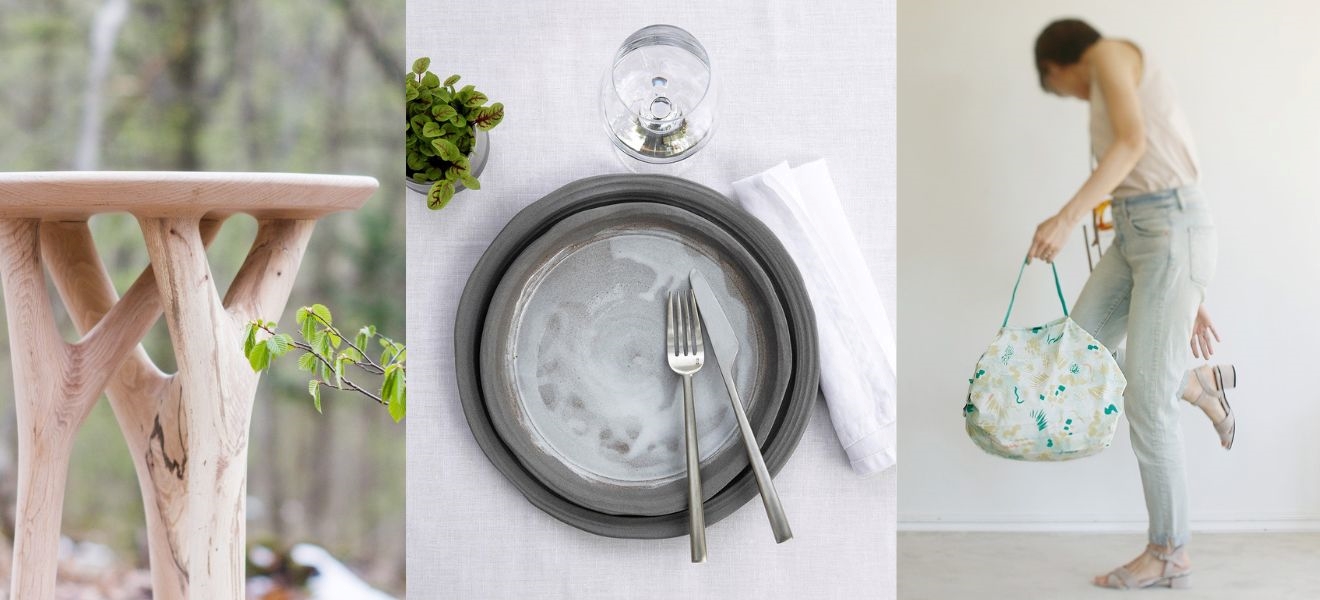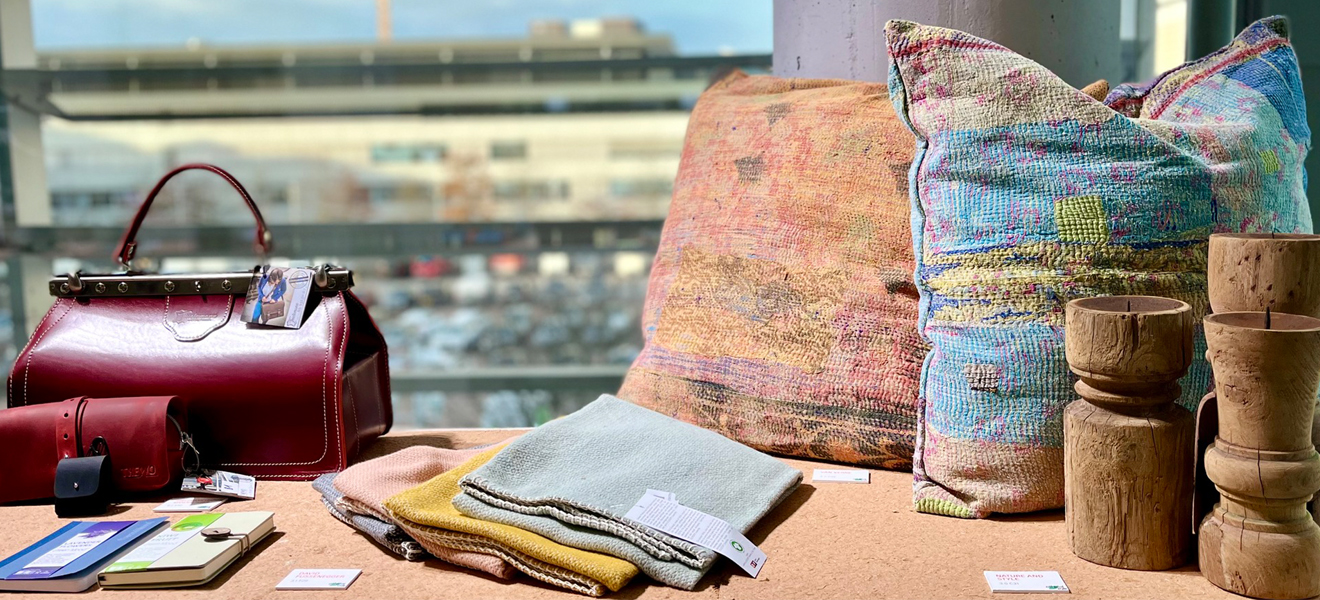Ceramic collections that buck the trend of transience, plates made from beef blood and heavy cast-iron pots. Although it wasn’t spelled out anywhere, durable design was a common theme running through this year’s Ambiente arts and crafts Talents.
“You can pass this pot down to future generations,” enthuses a visitor to the Berthold Hoffmann stand. Hoffmann nods affirmatively – and he should know. Based in Nuremberg, Hoffmann speaks rather modestly about the pots, casseroles and vessels that he develops and designs in small production runs in his studio HOFFMANN-METALLGEFÄSSE, and then manufactures in collaboration with an iron foundry. Hoffmann’s tableware and cookware have received multiple awards and honours, including the Hesse State Prize for German Arts and Crafts and the German Design Award of the German Design Council in Frankfurt in 2016. The creations have also been displayed in exhibitions, for example last year in New York.
Hoffmann is part of the Ambiente Talents programme because his limited-edition products are still regarded by many as an insider tip. Here he presented a selection of his cookware: solid pots and casseroles that are extremely robust and, as guaranteed by their creator, are outstanding examples of durable and elegant design. Having studied goldsmithing and silversmithing at the Academy of Fine Arts in Nuremberg, Hoffmann then went on to acquire the necessary metalworking skills. In his work he artistically combines rough-hewn simplicity with refinement. What we found particularly eye-catching was an angular cast-iron casserole, which, with its projecting, dark handles, is a creative homage to Chinese bronze vessels. Timelessness is not only inscribed in the material: “I am interested in shapes that are not transient,” explains Hoffmann “They will still be pleasing to the eye in 20 years’ time – because they exist outside the bounds of fashion.”


Sustainable consumption: In this case we are talking specifically about durable design – products that should last for more than a single season. Just like the bowls, cups and vessels created by Kodama Toki, which the Japanese manufacturer produces using slipcasting techniques. In terms of materials and looks, they could hardly be further removed from Hoffmann’s metal creations. Some pieces are so wafer-thin that you can see your own hand shining through the base. With their minimalist design, the ceramic vessels exude a feeling of timelessness. And the longer you look at them the more interesting they become as individual differences start to emerge in these seemingly simple, hand-shaped objects. The fact that a single vessel does not impose a specific function is part of the concept: Kodama Toki creates ceramic objects that give their owners complete freedom to use them in all sorts of ways. A drop of sake? A nice dessert? A portion of wasabi? They’re all possible.

No fear of colours
There were also new favourites to discover at the Silvia K stand. After graduating in ceramics and visual research in 2012, the Slovakian-born designer has now settled in the English seaside town of Brighton. In her studio she creates plates, bowls and platters that stand out a little from the current range of ceramics on offer: “That’s right, I’m not afraid of colours,” she explains with a laugh. “That’s probably what makes me different from others at the moment.” Silvia K is responsible for the entire production process of her ceramic objects. For each series she creates her own clay mixture, and she mixes the colours herself from oxide pigments. The results are bright orange, elegant mint or rich petrol, each in one or two broad stripes on the white glazed tableware. Silvia K describes the objects she sends from her studio to her customers’ dining tables as delicate but solid. Often the primer and paint overlap, or a little unpainted beeswax-treated ceramic peeps out at the edges.

Radical thinking comes to the table
This year, the most radical approach to the theme of sustainable, durable design is probably the one taken by the Morfujeme design studio. The two-person Czech team presented roughly shaped, metallically shimmering plates made from, among other things, beef blood. “This material is hardly used in the industry these days,” explains Valérie Záhonová. It’s a by-product of beef production, so why not use this available resource? Záhonová and her design partner Petr Vykoukal belong to a generation of designers who have found their primary role in asking questions. Shouldn’t sustainability today mean making things out of waste and by-products? How can psychological barriers to such materials be overcome? Or should we actually be thinking quite differently, much more fundamentally?
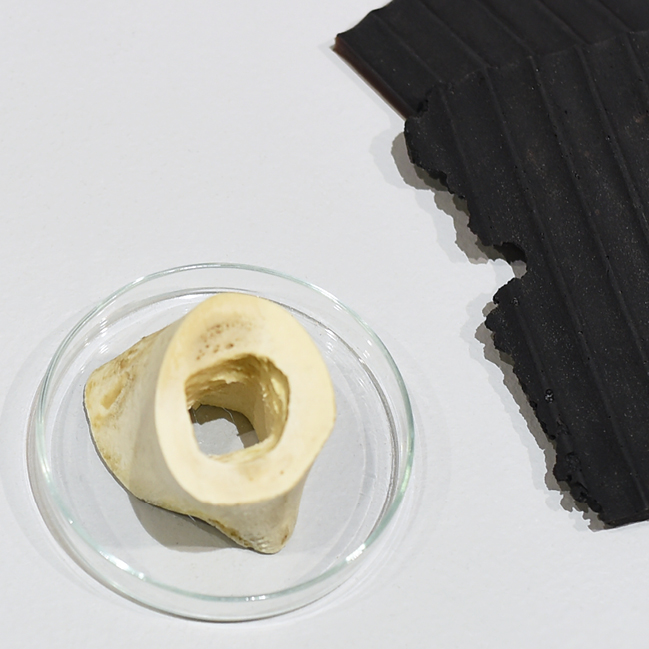
These young Czechs do not want to project themselves as creators. “What we’re doing here, others have already done before us,” emphasises Záhonová. Both see their plates as a practical illustration of what can be or has already been achieved in product design. They may look a bit rough, but they have their own special appeal. Radical thinking is making its mark on the table.


